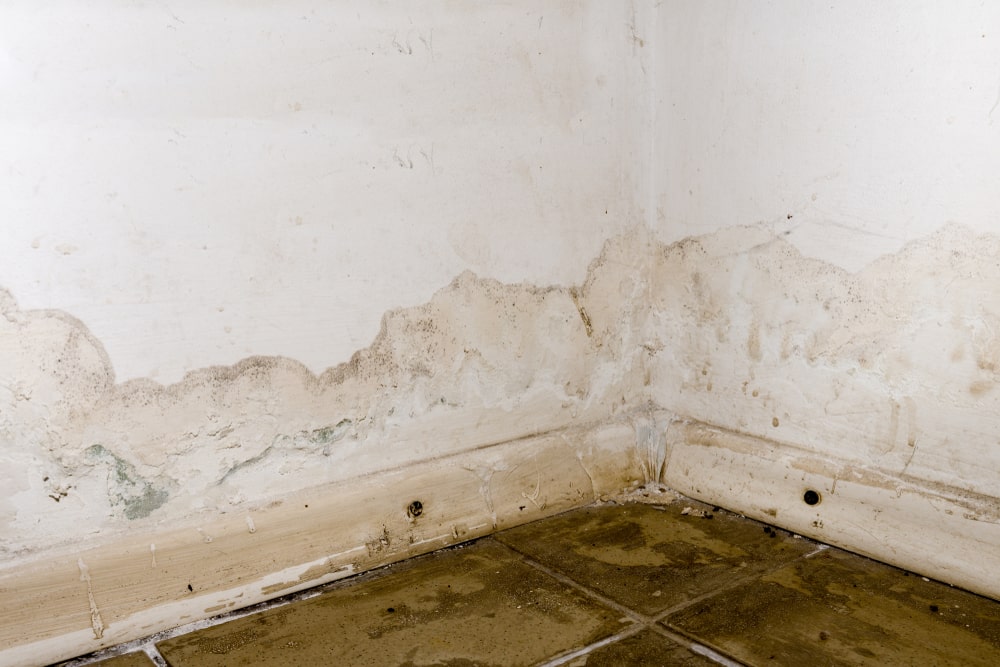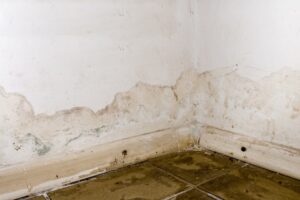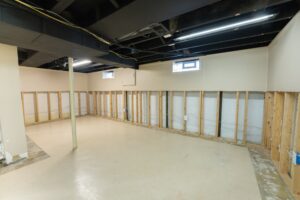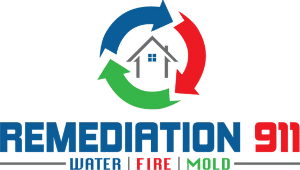What To Do if Your Drywall Gets Wet

With the heavy storms that have hit Florida this year, residents throughout the state are experiencing water damage and flooding. When this type of damage occurs, drywall is usually one of the first casualties. Unfortunately, when drywall gets wet, it can put the structural integrity of your walls at risk.
Don’t worry, though – there are ways to save moist drywall and avoid further problems.
In this blog, we’ll discuss what to do if your drywall gets wet and how to restore your home after water damage or flooding. We’ll also discuss when to contact the restoration professionals.
Let’s dive in.
First Things First: What is Drywall?
Drywall is a common construction material used to build walls and ceilings. It’s popular because it’s durable, easy to install, and generally simple to repair.
While drywall is sturdy and stable in dry conditions, it is made of absorbent material that saturates quickly and is not meant to stand up to flooding or water damage. When drywall gets wet, it loses its rigidity.
What Causes Drywall Damage?

There are many potential causes of water leaks and drywall damage. In Florida, a few of the most common are flooding and storm damage. It doesn’t stop there, though.
Appliance malfunctions, like an overflowing washing machine or dishwasher, plumbing leaks, sewage backup, and more, can all cause drywall damage.
In instances of flooding, drywall is most likely to get damaged when the standing water is more than a few inches deep or when the flooding comes from the second story or above, as in the case of an overflowed bathtub.
Drywall damage can also occur when a home’s indoor humidity level is too high. This is common in basements and crawl spaces, which are usually damp, moist areas.
Unless the humidity is under control, drywall can absorb moisture from the air and start to sag or warp. It may also begin to harbor mold and mildew, which can create a health risk for your family.
What to do When Drywall Gets Wet
After a big storm, water can leak up under a roof or through doors and windows to cause water damage that affects drywall. When it does, it can lead to all sorts of other issues in your home.
Prevent further damage by acting quickly with these tips:
1. Test the drywall
Although it’s usually easy to see the dampness in drywall, you’ll want to check the drywall for moisture in other ways. Here are a few methods you can use:
Buy a non-penetrating moisture meter to test drywall moisture levels.
Remove the baseboards near the affected area and use a screwdriver to poke into the drywall, checking for soft, moist areas.
If the water damage was minimal, you may only need to check a small area. In extensive flooding or storm damage, though, the damaged drywall may be spread throughout the house.
2. Document the damage
Before you contact a team to remove the drywall or start doing it yourself, make sure to document the water damage. We recommend using your phone to take comprehensive pictures of the damaged drywall, the area around it, and the source of any water damage or flooding.
For example, if your upstairs bathroom flooded, take pictures of the bathroom, the floor, and the source of the flooding, as well as the damaged drywall on the ceiling and floors below. These pictures will help you file an insurance claim and secure a payout.
3. Remove and replace damaged drywall

If the water damage was very minimal, the drywall may dry out on its own. Usually, this takes about 3-5 days and requires constant monitoring throughout. The catch, however, is that drywall can only survive very minimal moisture.
For example, a spilled glass of water won’t destroy drywall. The same might be true for a small plumbing leak that is caught immediately.
As long as you can stop the flow of water, clean up with the standing water, and dry out the drywall, it may survive the experience. If you notice discoloration in the drywall once it is completely dry, you can usually remedy it with paint.
If the drywall absorbed any moisture or was saturated, though, you’ll need to remove and replace it. Look for signs of sagging, warping, or rippling – all of which indicates the drywall must be removed.
The reason for this is simple: drywall is highly porous, and it absorbs moisture quickly. When it does, it creates the ideal habitat for mold and mildew and can quickly cause an out-of-control mold problem in your home.
Removing affected drywall is the easiest way to avoid this and protect unaffected areas of your property.
Additionally, soaked drywall begins to affect the insulation behind and around it, causing it to lose its R-value.
4. Contact the professionals
In most cases, the removal of drywall is NOT a DIY job. Instead, leave it to a team of skilled restoration professionals. Here at Remediation 911, we’re proud to be a quality restoration company serving Florida homeowners and businesses.
If you’ve experienced water damage or flooding in your space, our restoration professionals will remove all damaged drywall, insulation, and other building materials and replace them completely. The result is a fresh, clean space that is safe for you and your family.
Knowing When To Call A Florida Restoration Company

Your drywall is a critical part of your home. The well-being of your walls and ceilings depend on drywall being dry and sturdy.
With this in mind, we recommend contacting a restoration company anytime your drywall gets wet. Our team will be able to evaluate the water damage or flooding, test the drywall for moisture absorption and saturation, and make any needed repairs.
Additionally, our team will be able to evaluate the drywall for signs of mold and mildew growth and remove it if it is present. Since mold and mildew growth can start to form within just 24 to 48 hours of water damage, this is a critical step.
Ready to learn more about our restoration company and how we can help you? Contact us today.
